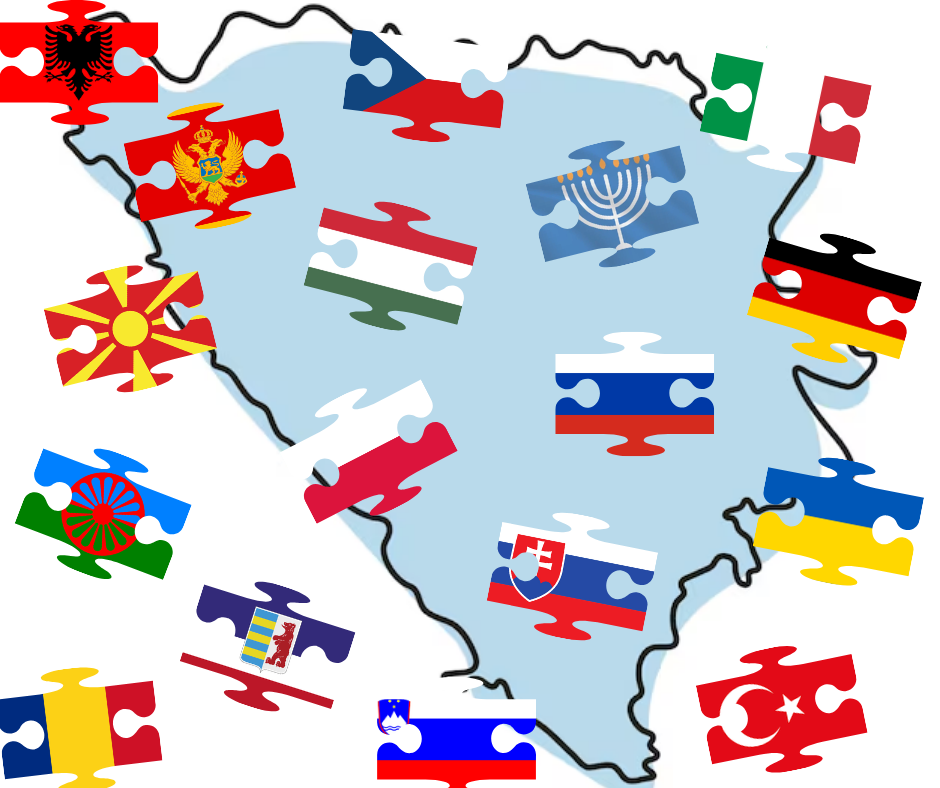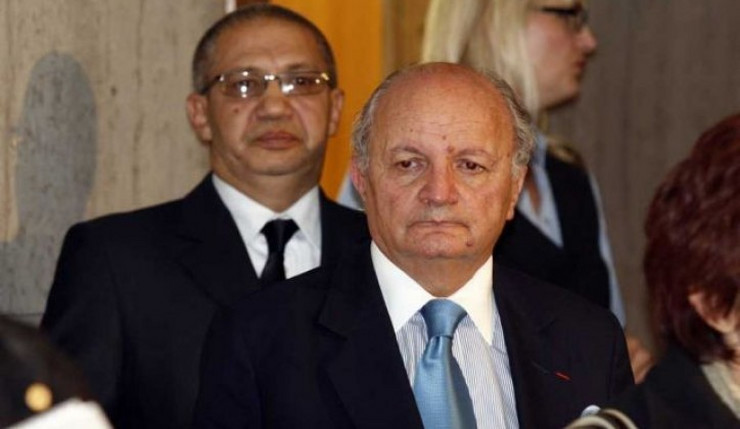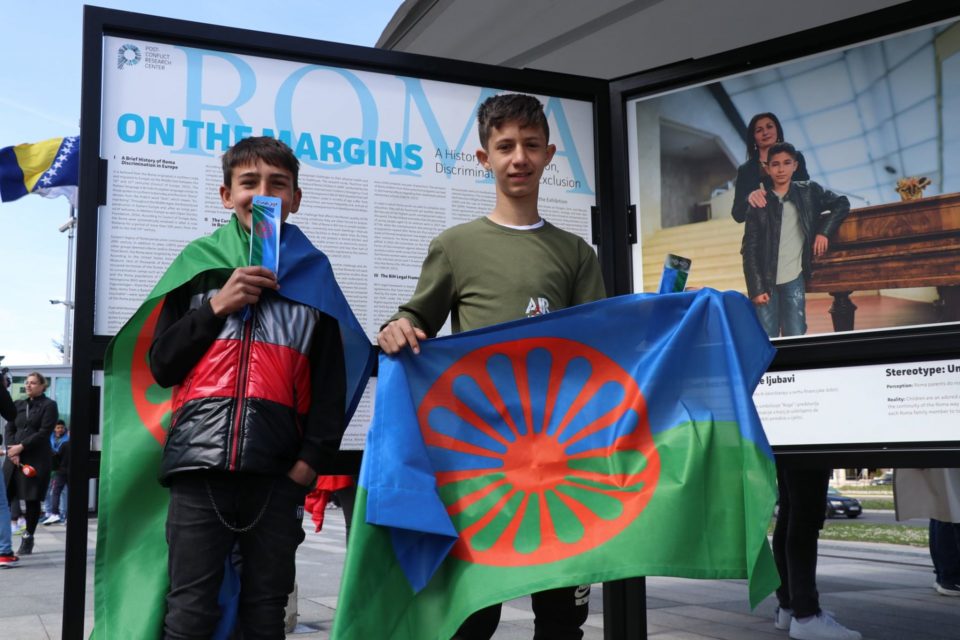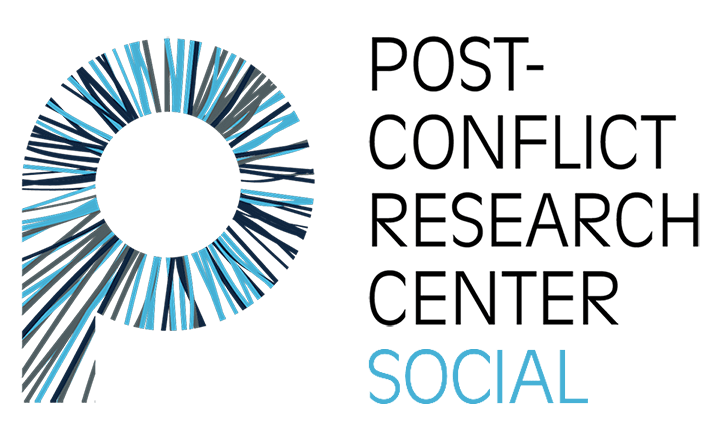
In Bosnia and Herzegovina today, national minorities such as Roma, Jews, Montenegrins, and others live as citizens, yet not equals.
They have Bosnian passports, pay taxes, and contribute to society, but the country’s constitutional framework defines them as “Others,” a legal classification that effectively holds them back from full political participation.
The Dayton Peace Agreement, which ended the Bosnian War, was signed in 1995. It set up a framework for sharing power that officially acknowledges only the three main ethnic groups of Bosniaks, Croats, and Serbs as “constituent peoples.” Only people from these categories can hold the highest political offices, such as the Presidency and the upper chamber of the Parliamentary Assembly.
“What hurts the most is knowing that I can’t have the same political rights, simply because I’m not one of the so-called constituent peoples,” said Vladimir Andrle, president of the Jewish cultural and educational society La Benevolencija, adding that “it’s a constant reminder that, no matter how much I love this country or how much I contribute to it, I’m not seen as equal in the eyes of the system.”
Despite a 2009 European Court of Human Rights (ECtHR) ruling in the landmark Sejdić-Finci v. Bosnia and Herzegovina case, which deemed this exclusion a violation of the European Convention on Human Rights, no subsequent constitutional reform has been implemented. The case was brought to the court by Dervo Sejdić, a Roma activist and longtime fighter for human rights, and Jakob Finci, president of the Jewish community in Bosnia and Herzegovina, who are both prominent public figures. They were legally prohibited from running for the Presidency or the House of Peoples solely because they did not identify as one of the three constituent peoples. The Court found that this discrimination on the basis of ethnicity violated their right to run for election and to be free from discrimination under the European Convention.
The Sejdić-Finci ruling was just the beginning. Several cases have since confirmed that Bosnia’s constitutional framework systematically violates the rights of its citizens. In Zornić v. Bosnia and Herzegovina (2014), the ECtHR ruled that individuals who do not wish to declare any ethnic affiliation are also unconstitutionally excluded from public office. In Pilav v. Bosnia and Herzegovina (2016), the ECtHR concluded that a Bosniak resident of Republika Srpska was denied the right to run for the Presidency solely based on his ethnicity and residence. Most recently, in Kovačević v. Bosnia and Herzegovina (2023), the ECtHR ruled that both the right to stand for election and the right to vote were violated due to the same ethnic and territorial restrictions. However, after appeals, it was determined in 2025 that there was no violation of the European Convention on Human Rights, i.e. that the Court cannot engage in a general review of the alignment of the configuration of the electoral system in BiH along entity lines, nor can it abstractly compare the manner in which the elections were conducted in each of the entities.

“We Haven’t Outgrown Dayton”
Together, these court decisions signal that the problem of ethnic exclusion is not an isolated event but a representation of Bosnia’s structurally discriminatory political system. However, reforms have stalled in the midst of political deadlock and a general unwillingness to challenge the ethnonational status quo, according to the High Representative’s 2023 report.
“The Dayton model was never meant to last as long as it has,” said Irma Jakić, said software engineer, Irma Jakić, a Serb from Sarajevo. “It was intended as a temporary solution. We haven’t outgrown it because we haven’t yet reached a better alternative or change of mindset.”
Sanela Bešić is a President of the Kali Sara Association and Roma Information Center. She said that she is a citizen who doesn’t belong to one of the so-called ‘three constituent peoples,’ for which she feels “every day that I don’t have equal rights to participate equally in political and social life.”
“Exclusion is a deeply frustrating and discouraging experience,” said Bešić.
Advocating for equal rights and opportunities
Andrle agrees with her, adding that there are more than 150,000 citizens of Bosnia and Herzegovina who are categorized as ‘Others.’ He explained how it doesn’t affect his Bosnian and Herzegovinian identity because this feeling comes from the inside.
“Still, we’ve normalized discrimination. And that can happen to anyone, anytime,” said Andrle.
Despite all of the institutional and legal barriers, civil society organizations like La Benevolencija and Kali Sara remain steadfast in their support of change.
“We’re trying to do a number of activities to bring people together, and that’s how we push back against exclusion. We, as a Jewish minority, don’t want anything more than any other citizen of Bosnia and Herzegovina has. The same rights and the same opportunities are basics of our, let’s say, mission,” said Andrle.
Similarly, Kali Sara promotes the political integration of Roma populations while offering vital services, such as educational trainings and workshops, and connecting Roma to legal and social aid providers.

“One of the biggest problems is the near-total exclusion of Roma from decision-making processes at higher levels of government,” said Bešić. “In areas where we have Roma representatives, we see real results. But where we don’t, advocacy depends entirely on the goodwill of others.”
The nation’s postwar political structure, which was intended to ensure ethnic representation and avoid conflict, is now experiencing strain. For national minorities, it means continuing to live in the shadow of constituent peoples, citizens without a nation fully willing to claim them.
“What’s especially painful is that I was born here. This is my home. But the system keeps telling me that I don’t fully belong,” Andrle said. “It takes a toll, not just on how I see the country but on how I see myself. It makes you feel less visible, like you’re always on the margins, no matter how hard you try to be part of the whole.”






